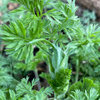eomecon chionantha - snow poppy
User
10 years ago
More Discussions
I know there will be shaking of heads but moving toan area filled with thuggish hogweeds and bramble and at least 20x bigger than what I have been used to, I am looking at some garden thugs of my own - particularly stoloniferous, but beautiful plants....and along with the usual suspects (campanula rapunculoides, convallaria, phlox and anemones), I noticed this rather lovely woodlander.
Any suggestions?


Ispahan Zone6a Chicago
UserOriginal Author
Ispahan Zone6a Chicago
UserOriginal Author